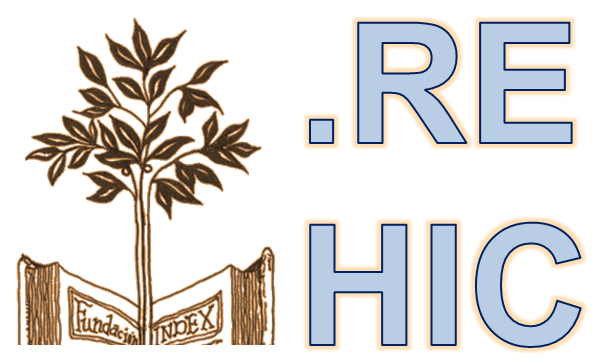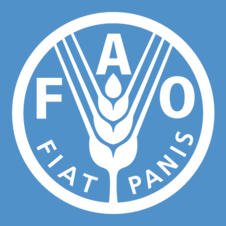Factores relacionados a la presencia del síndrome de Burnout en una muestra de enfermeras del Sector Salud, Ciudad de México.
DOI:
https://doi.org/10.29105/respyn17.3-1Keywords:
Burnout, enfermera, autoestimaAbstract
Introducción: Las enfermeras son un grupo profesional con alto riesgo de sufrir síndrome de Burnout. Algunos factores sociodemográficos y psicológicos se relacionan a dicho síndrome. El objetivo del presente trabajo fue evaluar la relación entre el estrés psicológico, los tres factores descritos para el síndrome de Burnout, y las características socio-demográficas y psicológicas en un grupo de enfermeras. Material y Métodos: Participaron 265 enfermeras de un centro especializado en salud reproductiva. Todas completaron las evaluaciones sobre características socio-demográficas y aspectos relacionados con sus condiciones de trabajo. Se aplicaron además el Inventario de Burnout de Maslach, el Inventario de Coopersmith, y el Cuestionario General de Salud. Resultados: Se observaron altos niveles de agotamiento emocional en 17.4% de la muestra. El 4.9% de las enfermeras mostraron bajos niveles de realización personal. La autoestima estuvo relacionada con el agotamiento emocional, la despersonalización y la realización personal. El agotamiento emocional se relacionó con la atención de pacientes seriamente enfermos, y con el trabajo en el horario matutino. Conclusiones: Los factores del síndrome de Burnout, particularmente el agotamiento emocional se relacionan con las condiciones de trabajo. Otros elementos que se relacionan con este síndrome son el estrés psicológico y la autoestima.
Downloads
References
Ahmadi, O., Azizkhani, R., & Basravi, M. (2014). Correlation between workplace and occupational burnout syndrome in nurses. Advanced biomedical research, 3. DOI: https://doi.org/10.4103/2277-9175.125751
Boudreaux, E., Mandry, C., & Brantley, P. J. (1997). Stress, job satisfaction, coping, and psychological distress among emergency medical technicians. Prehospital and Disaster Medicine, 12(4), 9-16. DOI: https://doi.org/10.1017/S1049023X00037742
Cantú, L., Asunción, M., Verduzco, M. A., Acevedo, M., & Cortés, J. (1993). Validez y confiabilidad del inventario de autoestima de Cooper Smith para adultos, en población mexicana. Revista latinoamericana de psicología, 25(2).
Cicchitti, C., Cannizzaro, G., Rosi, F., Maccaroni, R., & Menditto, V. (2014). Burnout syndrome in pre-hospital and hospital emergency. Cognitive study in two cohorts of nurses. Recenti progressi in medicina, 105(7-8), 275-280.
Cooper, C. L. (1998). Theories of organizational stress: OUP Oxford.
Chakraborty, R., Chatterjee, A., & Chaudhury, S. (2012). Internal predictors of burnout in psychiatric nurses: An Indian study. Industrial psychiatry journal, 21(2), 119. DOI: https://doi.org/10.4103/0972-6748.119604
Cho, S. H., Park, M., Jeon, S. H., Chang, H. E., & Hong, H. J. (2014). Average hospital length of stay, nurses’ work demands, and their health and job outcomes. Journal of Nursing Scholarship, 46(3), 199-206. DOI: https://doi.org/10.1111/jnu.12066
Duquette, A., Kérowc, S., Sandhu, B. K., & Beaudet, L. (1994). Factors related to nursing burnout a review of empirical knowledge. Issues in Mental Health Nursing, 15(4), 337-358. DOI: https://doi.org/10.3109/01612849409006913
Ferreira, N. d. N., & Lucca, S. R. d. (2015). Burnout syndrome in nursing assistants of a public hospital in the state of São Paulo. Revista Brasileira de Epidemiologia, 18(1), 68-79. DOI: https://doi.org/10.1590/1980-5497201500010006
Golderberg, D., & Williams, P. (1988). A user's guide to the General Health questionnaire. Windsor, UK: NFER-Nelson.
Hasselhorn, H.-M., Tackenberg, P., & Peter, R. (2004). Effort–reward imbalance among nurses in stable countries and in countries in transition. International journal of occupational and environmental health, 10(4), 401-408. DOI: https://doi.org/10.1179/oeh.2004.10.4.401
Kalliath, T., & Morris, R. (2002). Job satisfaction among nurses: a predictor of burnout levels. Journal of nursing administration, 32(12), 648-654. DOI: https://doi.org/10.1097/00005110-200212000-00010
Karanikola, M. N., Papathanassoglou, E. D., Giannakopoulou, M., & Koutroubas, A. (2007). Pilot exploration of the association between self‐esteem and professional satisfaction in Hellenic Hospital nurses. Journal of Nursing Management, 15(1), 78-90. DOI: https://doi.org/10.1111/j.1365-2934.2006.00673.x
Khamisa, N., Oldenburg, B., Peltzer, K., & Ilic, D. (2015). Work related stress, burnout, job satisfaction and general health of nurses. Int J Environ Res Public Health, 12(1), 652-666. DOI: https://doi.org/10.3390/ijerph120100652
Lambert, V., Lambert, C., Petrini, M., Li, X., & Zhang, Y. (2007). Predictors of physical and mental health in hospital nurses within the People’s Republic of China. International nursing review, 54(1), 85-91. DOI: https://doi.org/10.1111/j.1466-7657.2007.00512.x
López Romo, H. (2011). Asociación Mexicana de Agencias de Investigación de Mercado y Opinión Pública (AMAI) Niveles Socioeconómicos (NSE) 8X7: PowerPoint.
Lou, J. H., Li, R. H., Yu, H. Y., & Chen, S. H. (2011). Relationships among self‐esteem, job adjustment and service attitude amongst male nurses: A structural equation model. Journal of clinical nursing, 20(5‐6), 864-872. DOI: https://doi.org/10.1111/j.1365-2702.2010.03387.x
Lu, H., While, A. E., & Barriball, K. L. (2007). Job satisfaction and its related factors: a questionnaire survey of hospital nurses in Mainland China. International journal of nursing studies, 44(4), 574-588. DOI: https://doi.org/10.1016/j.ijnurstu.2006.07.007
Maslach, C., & Jackson, S. E. (1981). The measurement of experienced burnout. Journal of organizational behavior, 2(2), 99-113. DOI: https://doi.org/10.1002/job.4030020205
Maslach, C., Schaufeli, W. B., & Leiter, M. P. (2001). Job burnout. Annual review of psychology, 52(1), 397-422. DOI: https://doi.org/10.1146/annurev.psych.52.1.397
Medina-Mora, M., Padilla, G., Campillo-Serrano, C., Mas, C., Ezban, M., Caraveo, J., & Corona, J. (1983). The factor structure of the GHQ: a scaled version for a hopital's general practice service in Mexico. Psychological medicine, 13(2), 355-361. DOI: https://doi.org/10.1017/S0033291700050984
Mikesell, R. H., Calhoun, L. G., & Lottman, T. J. (1970). Instructional set and the Coopersmith Self-Esteem Inventory. Psychological reports, 26(1), 317-318. DOI: https://doi.org/10.2466/pr0.1970.26.1.317
Moghaddasi, J., Mehralian, H., Aslani, Y., Masoodi, R., & Amiri, M. (2013). Burnout among nurses working in medical and educational centers in Shahrekord, Iran. Iranian journal of nursing and midwifery research, 18(4), 294.
Moore, S., Lindquist, S., & Katz, B. (1997). Home health nurses: Stress, self-esteem, social intimacy, and job satisfaction. Home Care Provider, 2(3), 135-139. DOI: https://doi.org/10.1016/S1084-628X(97)90139-8
Moreno-Jiménez, B., Bustos, R., Matallana, A., & Miralles, T. (1997). La evaluacion del burnout: Problemas y alternativas. Revista de Psicología del Trabajo y de las Organizaciones, 13 (2), 185, 207.
Papathanasiou, I. V., Fradelos, E. C., Kleisiaris, C. F., Tsaras, K., Kalota, M. A., & Kourkouta, L. (2014). Motivation, leadership, empowerment and confidence: Their relation with nurses’ burnout. Materia socio-medica, 26(6), 405. DOI: https://doi.org/10.5455/msm.2014.26.405-410
Poncet, M. C., Toullic, P., Papazian, L., Kentish-Barnes, N., Timsit, J.-F., Pochard, F., . . . Azoulay, E. (2007). Burnout syndrome in critical care nursing staff. American journal of respiratory and critical care medicine, 175(7), 698-704. DOI: https://doi.org/10.1164/rccm.200606-806OC
Raftopoulos, V., Charalambous, A., & Talias, M. (2012). The factors associated with the burnout syndrome and fatigue in Cypriot nurses: a census report. BMC Public Health, 12(1), 457. DOI: https://doi.org/10.1186/1471-2458-12-457
Ribeiro, V. F., Ferreira Filho, C., Valenti, V. E., Ferreira, M., de Abreu, L. C., de Carvalho, T. D., . . . Leão, E. R. (2014). Prevalence of burnout syndrome in clinical nurses at a hospital of excellence. International archives of medicine, 7(1), 22. DOI: https://doi.org/10.1186/1755-7682-7-22
Suzuki, K., Ohida, T., Kaneita, Y., Yokoyama, E., Miyake, T., Harano, S., . . . Tsutsui, T. (2004). Mental health status, shift work, and occupational accidents among hospital nurses in Japan. Journal of occupational health, 46(6), 448-454. DOI: https://doi.org/10.1539/joh.46.448
Welp, A., Meier, L. L., & Manser, T. (2015). Emotional exhaustion and workload predict clinician-rated and objective patient safety. Frontiers in psychology, 5, 1573. DOI: https://doi.org/10.3389/fpsyg.2014.01573
Downloads
Published
How to Cite
Issue
Section
License
The rights of the work belong to the author or authors, however, by sending it for publication in the Public Health and Nutrition Magazine of the Faculty of Public Health and Nutrition of the Autonomous University of Nuevo León, they grant the right for its first publication in between electronic, and possibly, in print to the Public Health and Nutrition Magazine. The license used is the Creative Commons attribution, which allows third parties to use what is published whenever the authorship of the work is mentioned and the first publication that is in the Public Health and Nutrition Magazine. Likewise, the author or authors will take into account that it will not be allowed to send the publication to any other journal, regardless of the format. The authors will be able to make other independent and additional contractual agreements for the non-exclusive distribution of the version of the article published in the Public Health and Nutrition Magazine (e.g., institutional repository or publication in a book) provided they clearly state that The work was published for the first time in the Public Health Magazine, Magazine of the Faculty of Public Health and Nutrition of the Autonomous University of Nuevo León.














